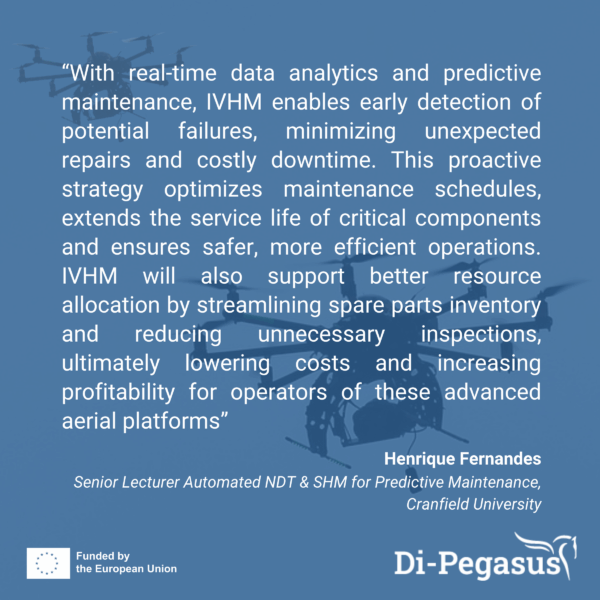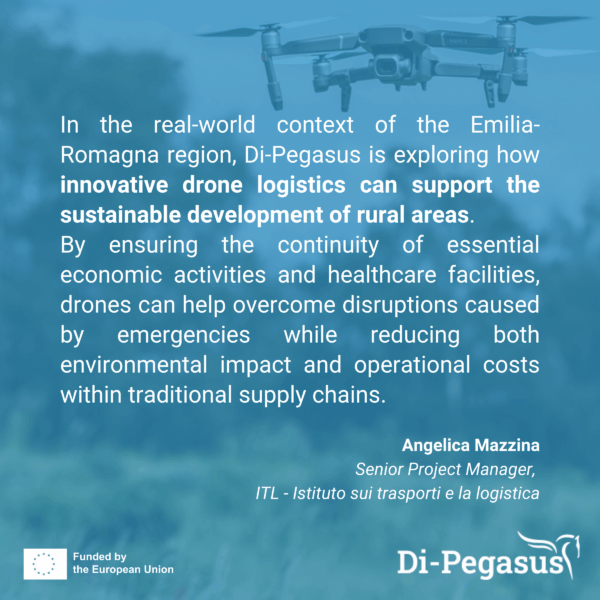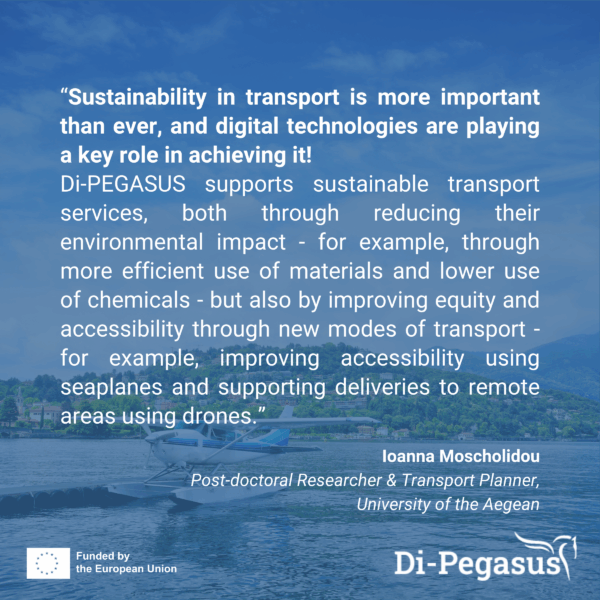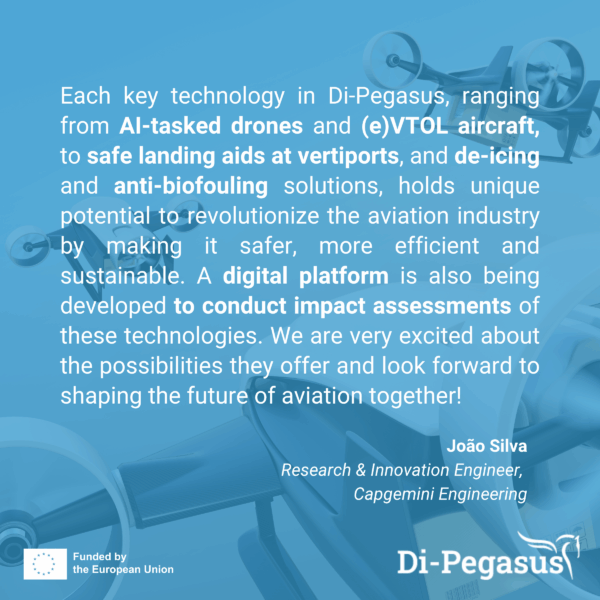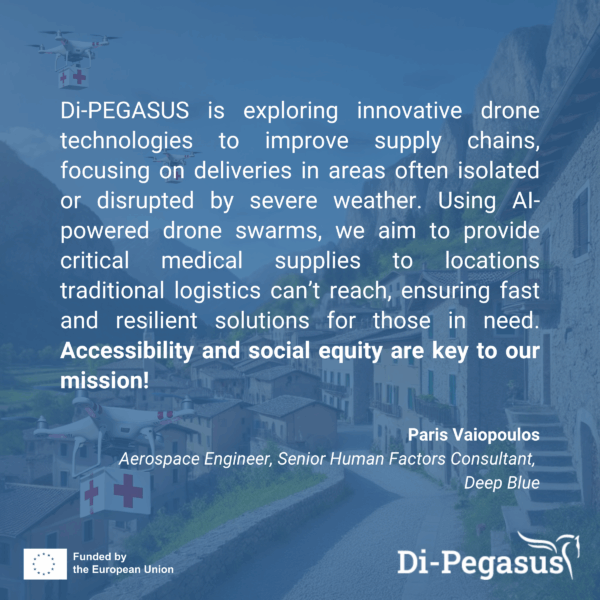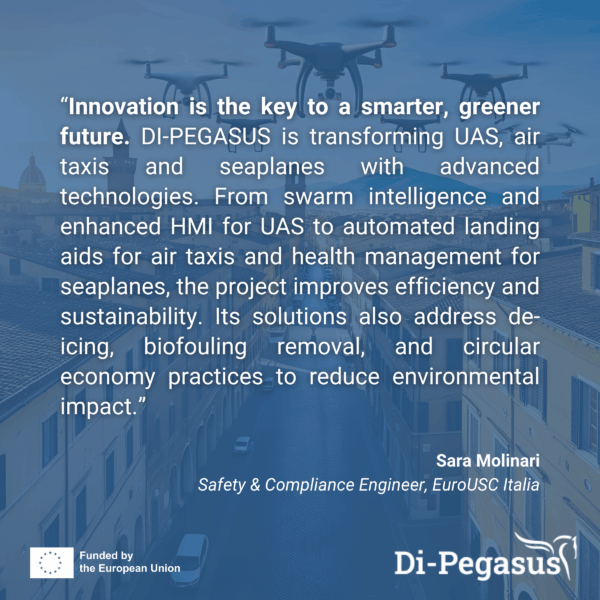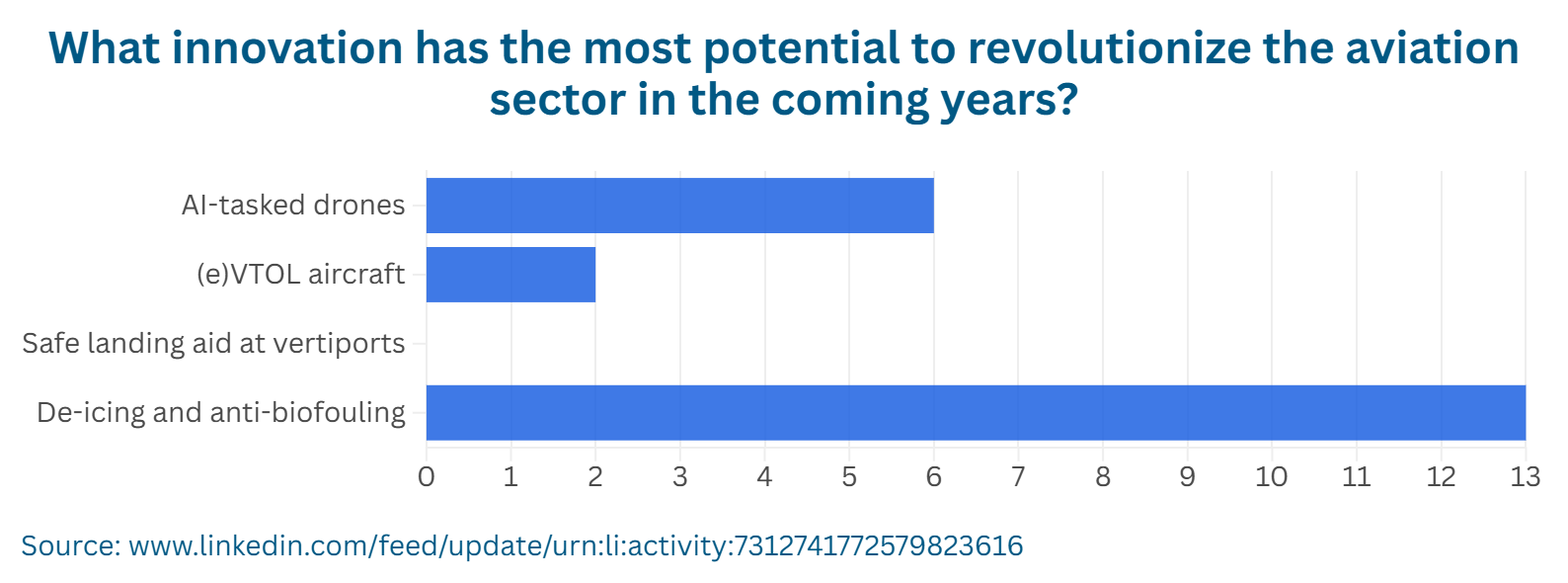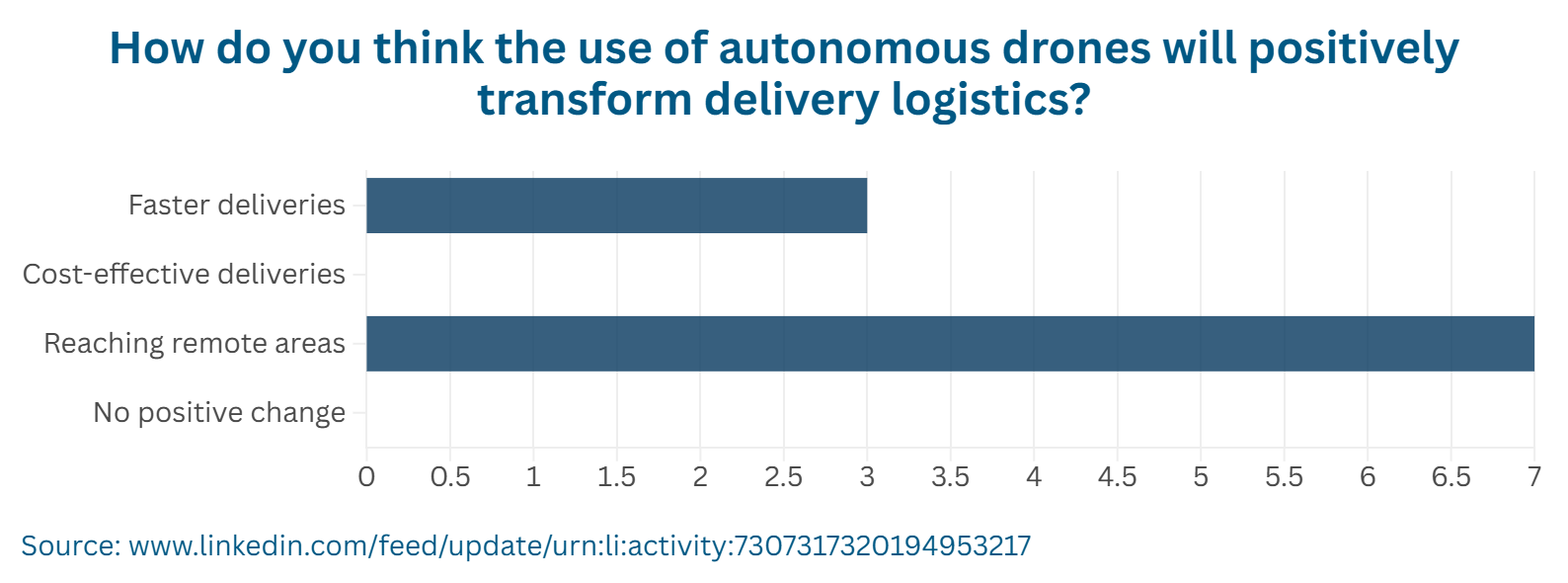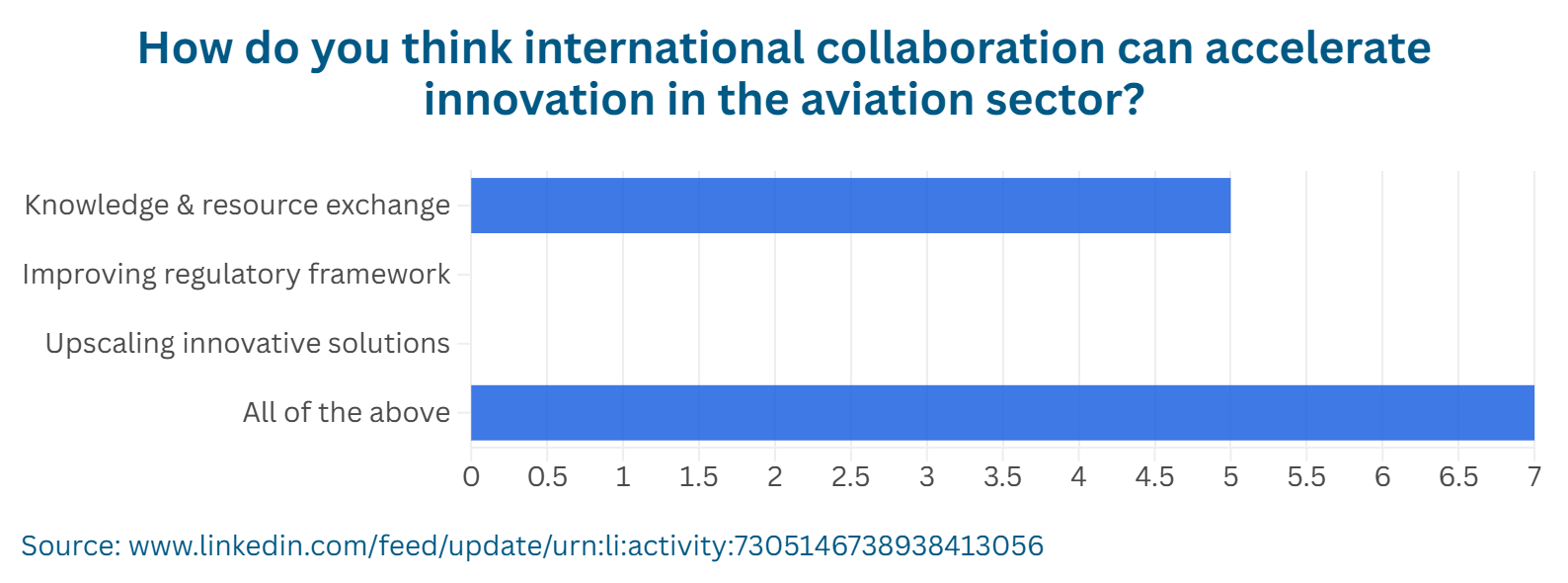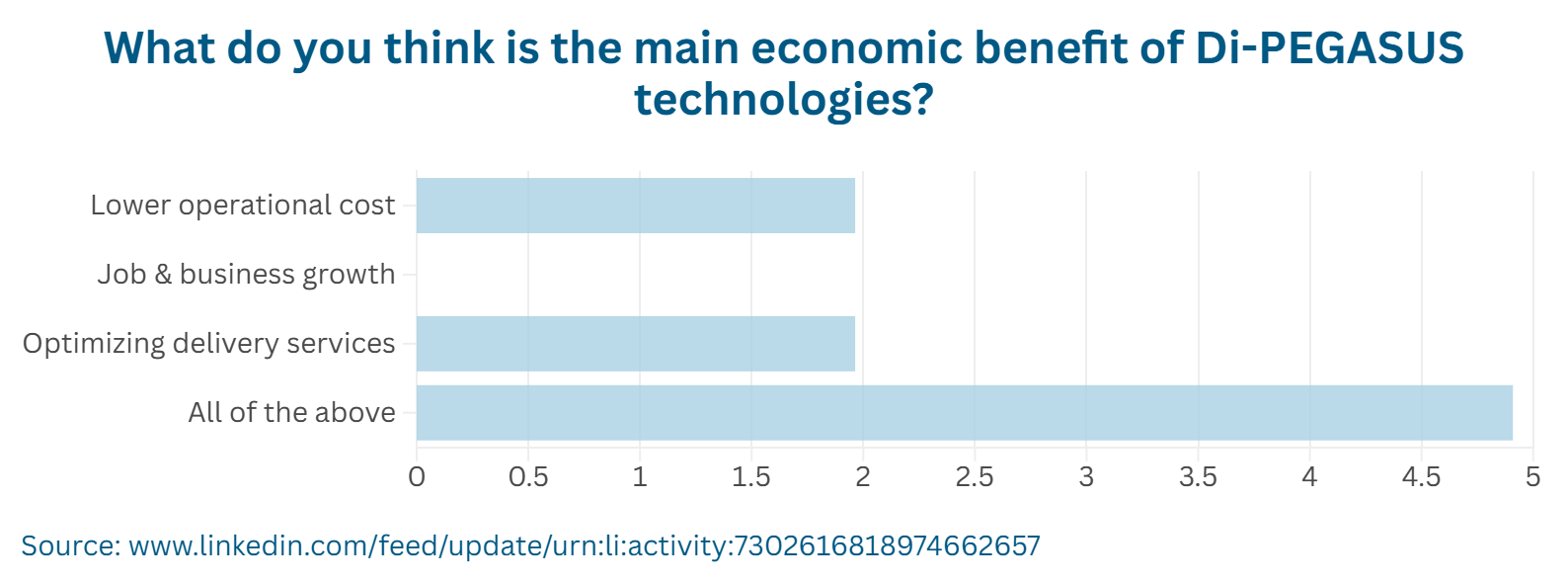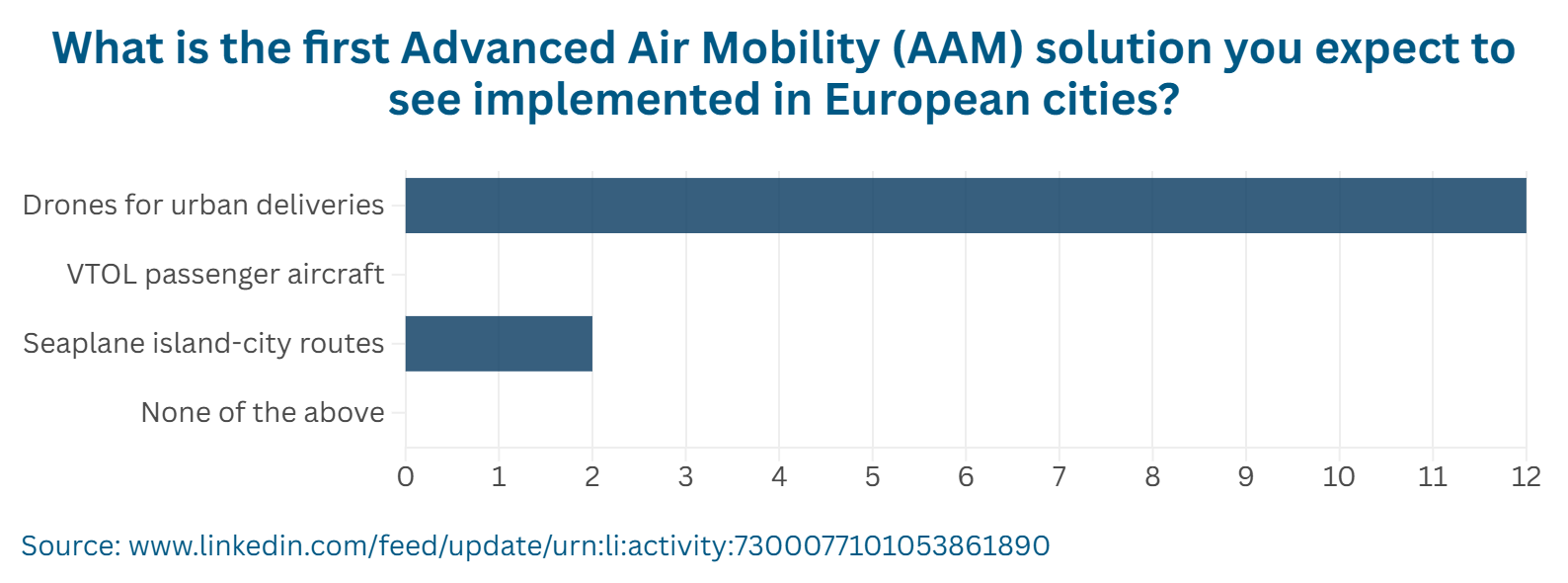Over the last few months, we launched our first Awareness Campaign through a series of weekly LinkedIn surveys.
Our goal was to understand community perspectives on the key topics of Di-PEGASUS. While the sample size was focused on quality over quantity, the results provide valuable insights into how our public perceives the future of sustainable aviation and Advanced Air Mobility (AAM).
Why We Launched This Campaign
As stated in our launch post: “There are no right or wrong answers—what matters is your perspective!” Our objective was to listen and understand how our community perceives:
- Sustainability in Aviation
- Advanced Air Mobility
- Economic Benefits
- Collaboration and Innovation
- Future of Drone Logistics
- Sustainability Perception in Transport
- Technological Innovation
Following each weekly survey, we shared expert insights from representatives of our Consortium, adding depth to the discussion and providing professional perspectives on each topic. These expert takes, now available at the end of this article, complement the community feedback and create a comprehensive view of each subject.
What We Learned: 8 Topics, 8 Perspectives
- Most Promising Technology for Sustainable Aviation
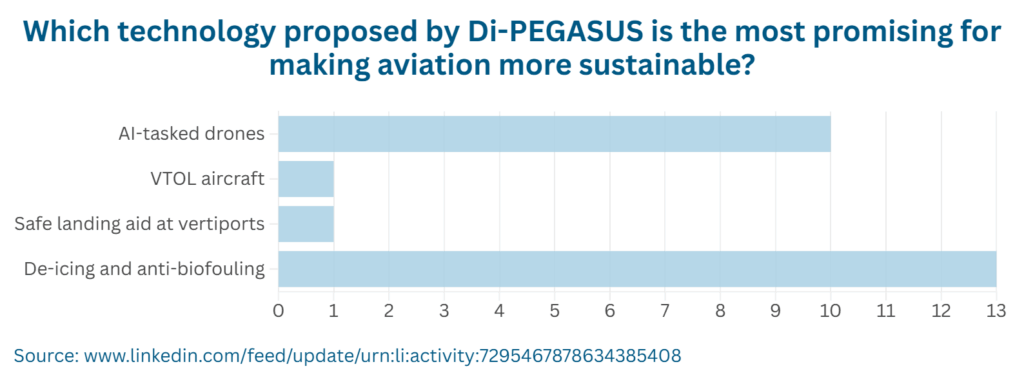
- First place: De-icing & anti-biofouling solutions (13 votes)
Innovative anti-biofouling & de-icing solutions address critical aviation challenges: biofouling refers to the accumulation of organisms on aircraft surfaces, while de-icing removes ice build-up, improving safety and efficiency in all weather conditions, at water airports and vertiports. - Second place: AI-tasked drones (10 votes)
Drones powered by artificial intelligence that autonomously plan and execute deliveries.
Our community clearly recognizes the potential of these core Di-PEGASUS technologies for sustainable aviation transformation. Additional technologies in the survey included:
- VTOL (Vertical Take-Off and Landing) aircraft
These innovative vehicles take off and land like helicopters but fly like planes, making urban air mobility a reality. - Vertiports
Dedicated hubs for VTOL aircraft takeoff, landing, and charging, enabling innovative air mobility.
- Impact of eVTOLs on Urban Environments

- 100% of participants believe eVTOLs will help reduce traffic and pollution rather than increase congestion.
This shows strong community optimism about urban air mobility’s environmental benefits.
NB: all eVTOLs are VTOLs, but not all VTOLs are eVTOLs. The difference is that eVTOLs use electric propulsion for vertical takeoff and landing.
- First AAM Solution Expected in European Cities
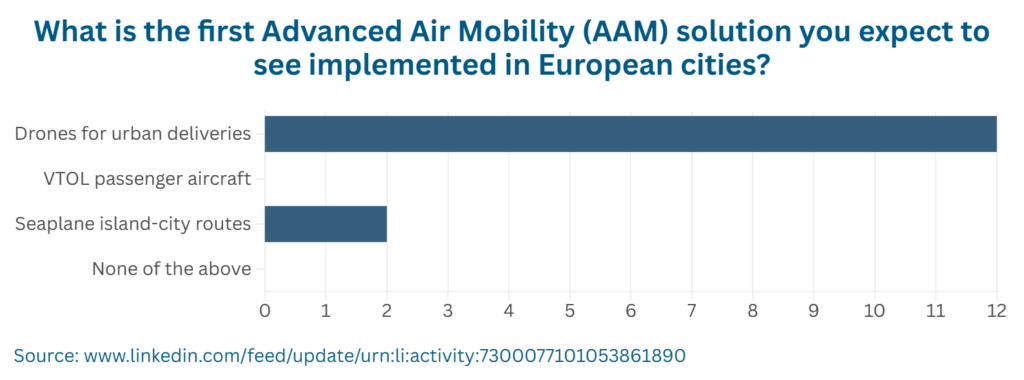
- First Place: Urban delivery drones (12 votes)
This shows how participants expect a practical, step-by-step approach to AAM implementation.
Advanced Air Mobility (AAM) aims to help emerging aviation markets safely develop an air transportation system that moves people and cargo between places previously not served or underserved by aviation, using enhanced aircraft technologies with improved efficiency and capabilities.
- Main Economic Benefit of Di-PEGASUS Technologies
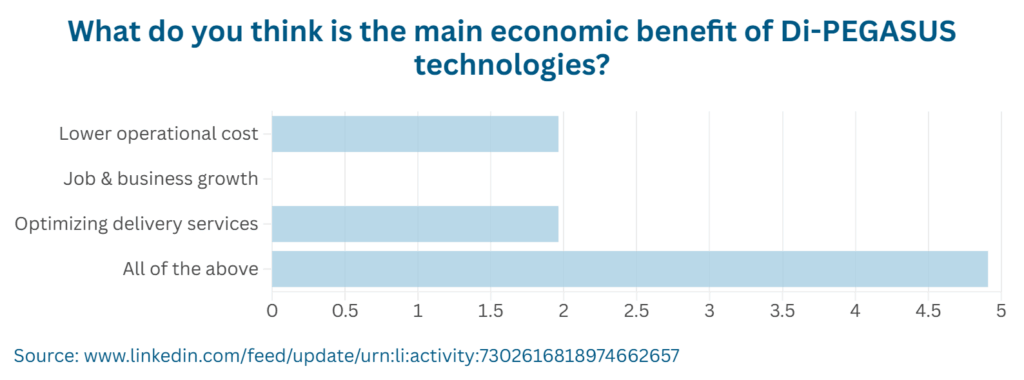
- Community members selected “All of the above” including:
- Reduced operational costs;
- Optimized logistics;
- New job creation opportunities;
- Enhanced maintenance efficiency;
- How International Collaboration Accelerates Innovation
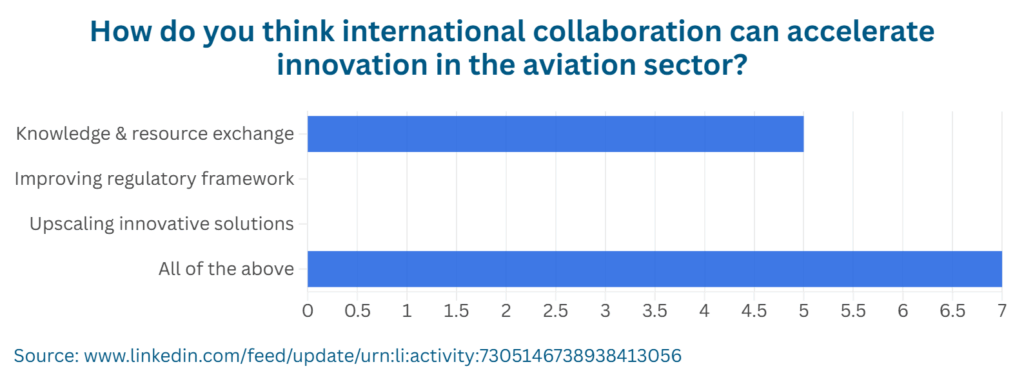
- 64% of participants chose comprehensive collaboration, covering knowledge-sharing, regulation harmonization, and technology upscaling.
This reflects strong support for Di-PEGASUS’s multi-partner European approach.
The involvement of 11 partners from 7 different countries, makes international collaboration one of the cornerstones of Di-PEGASUS.
The Consortium is highly complementary and combines research skills, academic background, technical competencies, prosumer experience, and access to relevant research infrastructures:
- Italy – EuroUSC Italia, Deep Blue, ITL (Institute for Transport and Logistics Foundation) and RINA Consulting;
- Greece – University of the Aegean and Centre for Research & Technology Hellas (CERTH);
- Ireland – Collins Aerospace;
- Portugal – Capgemini;
- Cyprus – Mediterra Holdings;
- France – Safran;
- United Kingdom – Cranfield University.
- Positive Impact of Autonomous Drones on Logistics

- Reaching remote areas (7 votes) – top priority;
- Faster delivery times (3 votes)- secondary benefit.
Di-PEGASUS is developing new technologies for flying and managing fleets of drones. Here are some practical examples of how autonomous drones will positively transform delivery logistics:
-
- Time-Saving: Medical transportation of equipment or organs could be up to 73% faster by drone compared to an ambulance—based on a case study of a Berlin rush-hour trip (Thursday, 5 PM) (Source: https://www.easa.europa.eu/en/light/topics/emergency-medical-services-vertical-take-and-landing-aircraft)
- Cost-Effectiveness: Thanks to the high level of automation, managing multiple drones from a single control center while optimizing routes and availability can significantly increase freight transport efficiency, all while reducing its carbon footprint.
- Reaching Remote Areas: Drones can bypass traffic jams and infrastructure limitations, allowing them to reach remote or poorly accessible areas. This means they can provide healthcare supplies to underserved regions and ensure the swift delivery of perishable products.
- Importance of Sustainability in Air Transport
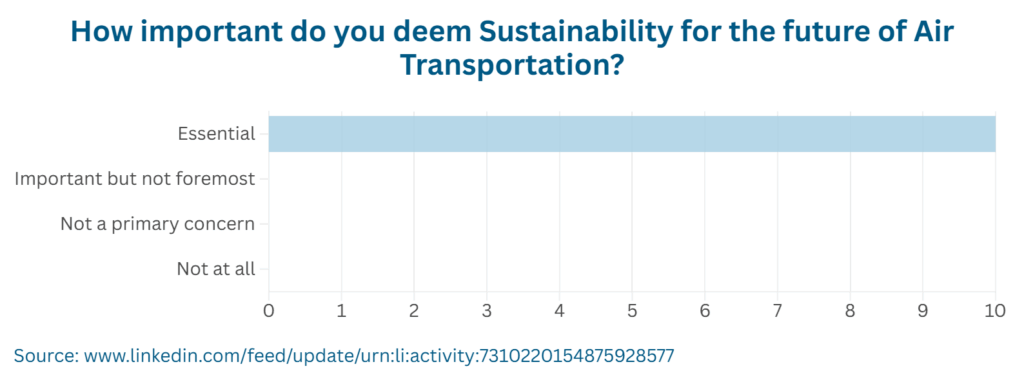
- 100% of participants rated sustainability as “Essential” for aviation’s future. A unanimous voice for environmental responsibility in aviation transformation.
- Technology with Highest Revolutionary Potential
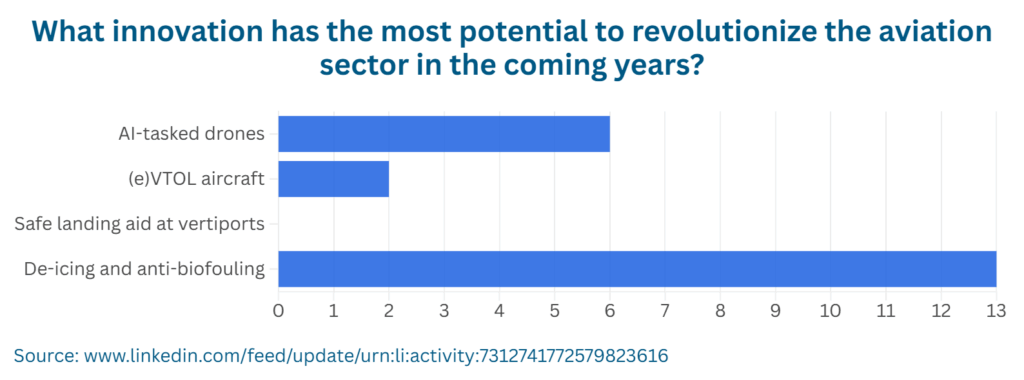
- De-icing & anti-biofouling solutions (13 votes) – confirmed as industry priority;
- AI-tasked drones (6 votes) – strong second place.
The community consistently recognizes these core Di-PEGASUS technologies as having the highest potential for revolutionary impact on sustainable aviation.
What These Responses Tell Us
- Clear Technology Preferences
The community consistently prioritized practical, environmentally-focused innovations. The repeated emphasis on de-icing and anti-biofouling solutions, plus AI-powered drones, shows strong alignment with Di-PEGASUS’s core technological focus.
- Pragmatic Implementation Expectations
The preference for cargo applications before passenger services suggests a thoughtful approach to technology adoption—building trust and proving value through logistics before expanding to personal transportation.
- Sustainability as a Core Value
The unanimous emphasis on sustainability confirms that the community sees environmental responsibility not as an option, but as a fundamental requirement for aviation’s future.
- Belief in Collaborative Innovation
Strong support for comprehensive international partnerships validates the project’s collaborative approach and the value of bringing together diverse expertise from across Europe.
- Focus on Accessibility and Equity
The emphasis on reaching remote areas shows the community values aviation’s potential to improve access and equality, particularly relevant for underserved regions.
How Community Insights Shape Di-PEGASUS
The survey responses confirm we’re developing solutions that resonate with what the community values most. Through our three real-world use cases, we’re addressing the identified priorities:
- Greece – Sustainable Seaplane Operations Advanced de-icing and anti-biofouling technologies for improved connectivity between islands and mainland, supporting local communities and tourism development.
- Italy – Intelligent Drone Logistics AI-powered drone swarms for efficient delivery services, particularly targeting rural and remote areas
- France – Urban Air Mobility Integration eVTOL solutions as part of the Paris Region AAM initiative, focusing on reducing urban congestion and pollution
Building Together
This awareness campaign was just the beginning of an ongoing dialogue with the community. The insights gathered validate our approach while helping us understand what matters most to those who will ultimately benefit from these technologies.
The strong consensus on sustainability, the practical approach to implementation, and the belief in collaborative innovation all guide how we continue developing Di-PEGASUS solutions.
This is about building the future of aviation together—with community perspectives at the center.
Keep the Conversation Going
Community engagement continues to shape sustainable aviation’s future. Stay connected with our journey:
- Follow us on LinkedIn for weekly updates and future surveys
- Browse our partner insights gallery below to explore expert perspectives on each survey topic
- Share thoughts and feedback. We’re always listening!


